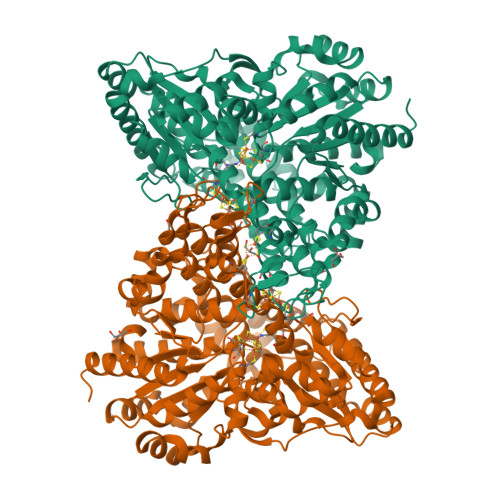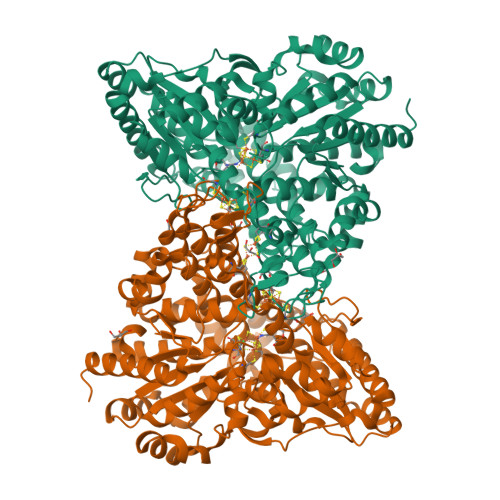Redox-dependent rearrangements of the NiFeS cluster of carbon monoxide dehydrogenase.
Wittenborn, E.C., Merrouch, M., Ueda, C., Fradale, L., Leger, C., Fourmond, V., Pandelia, M.E., Dementin, S., Drennan, C.L.(2018) Elife 7
- PubMed: 30277213
- DOI: https://doi.org/10.7554/eLife.39451
- Primary Citation of Related Structures:
6B6V, 6B6W, 6B6X, 6B6Y, 6DC2 - PubMed Abstract:
The C-cluster of the enzyme carbon monoxide dehydrogenase (CODH) is a structurally distinctive Ni-Fe-S cluster employed to catalyze the reduction of CO 2 to CO as part of the Wood-Ljungdahl carbon fixation pathway. Using X-ray crystallography, we have observed unprecedented conformational dynamics in the C-cluster of the CODH from Desulfovibrio vulgaris , providing the first view of an oxidized state of the cluster. Combined with supporting spectroscopic data, our structures reveal that this novel, oxidized cluster arrangement plays a role in avoiding irreversible oxidative degradation at the C-cluster. Furthermore, mutagenesis of a conserved cysteine residue that binds the C-cluster in the oxidized state but not in the reduced state suggests that the oxidized conformation could be important for proper cluster assembly, in particular Ni incorporation. Together, these results lay a foundation for future investigations of C-cluster activation and assembly, and contribute to an emerging paradigm of metallocluster plasticity.
Organizational Affiliation:
Department of Chemistry, Massachusetts Institute of Technology, Cambridge, United States.




















